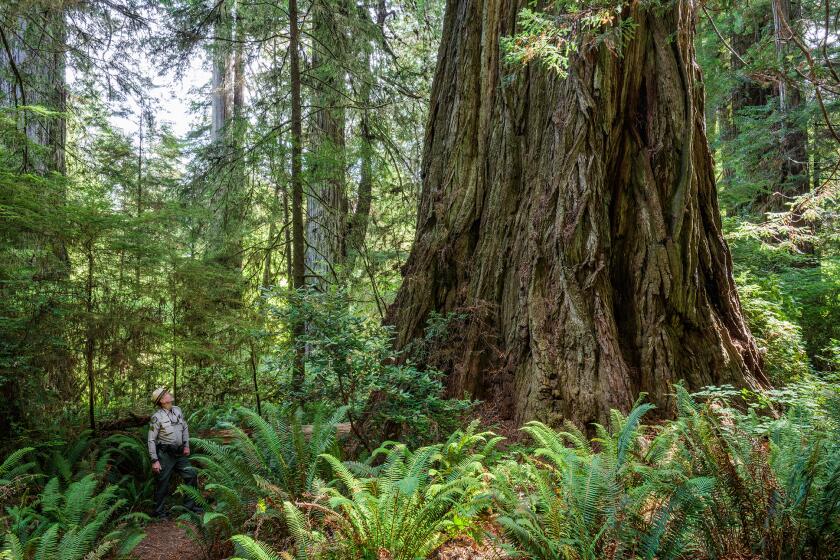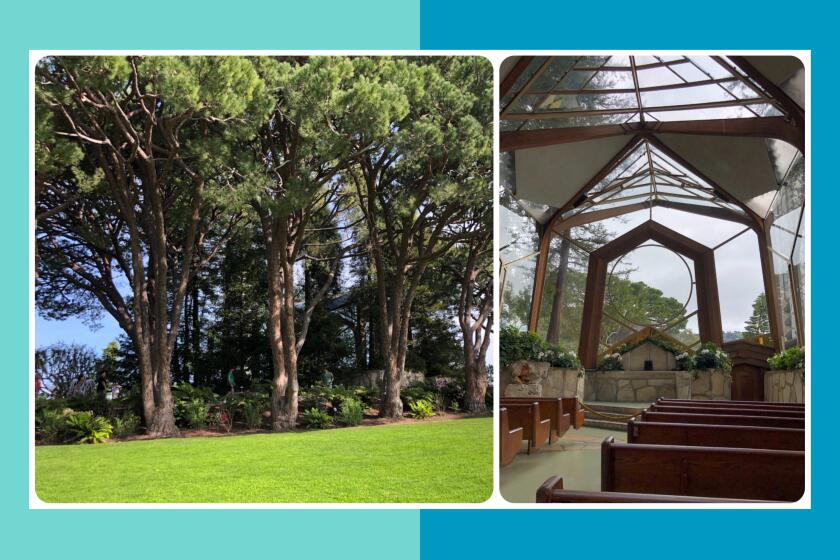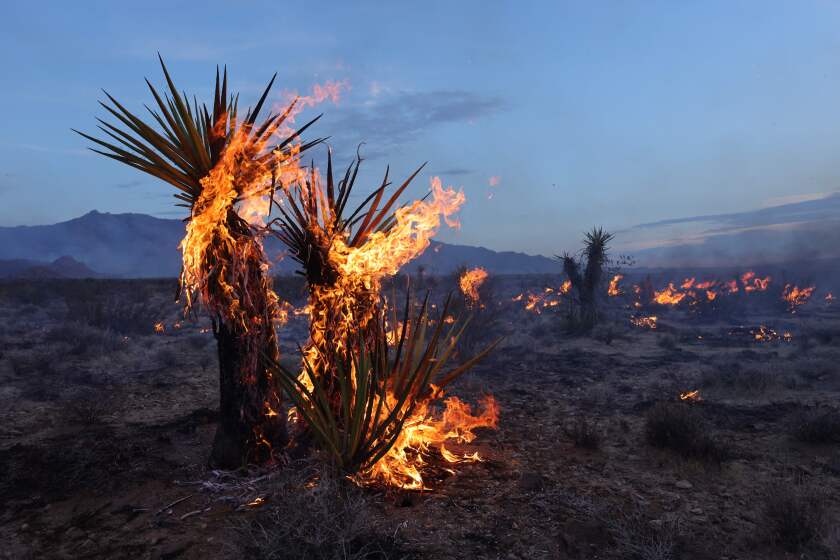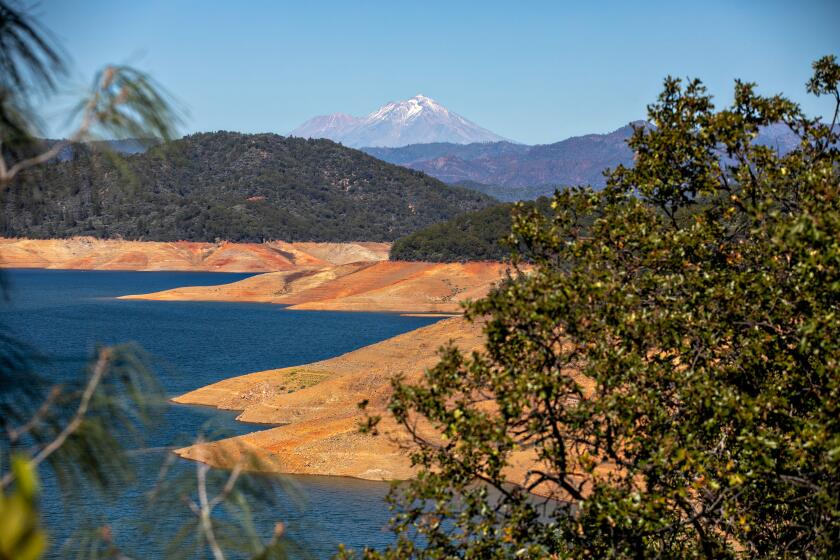It survived ‘Stumptown.’ Now an ancient redwood may finally be protected for good
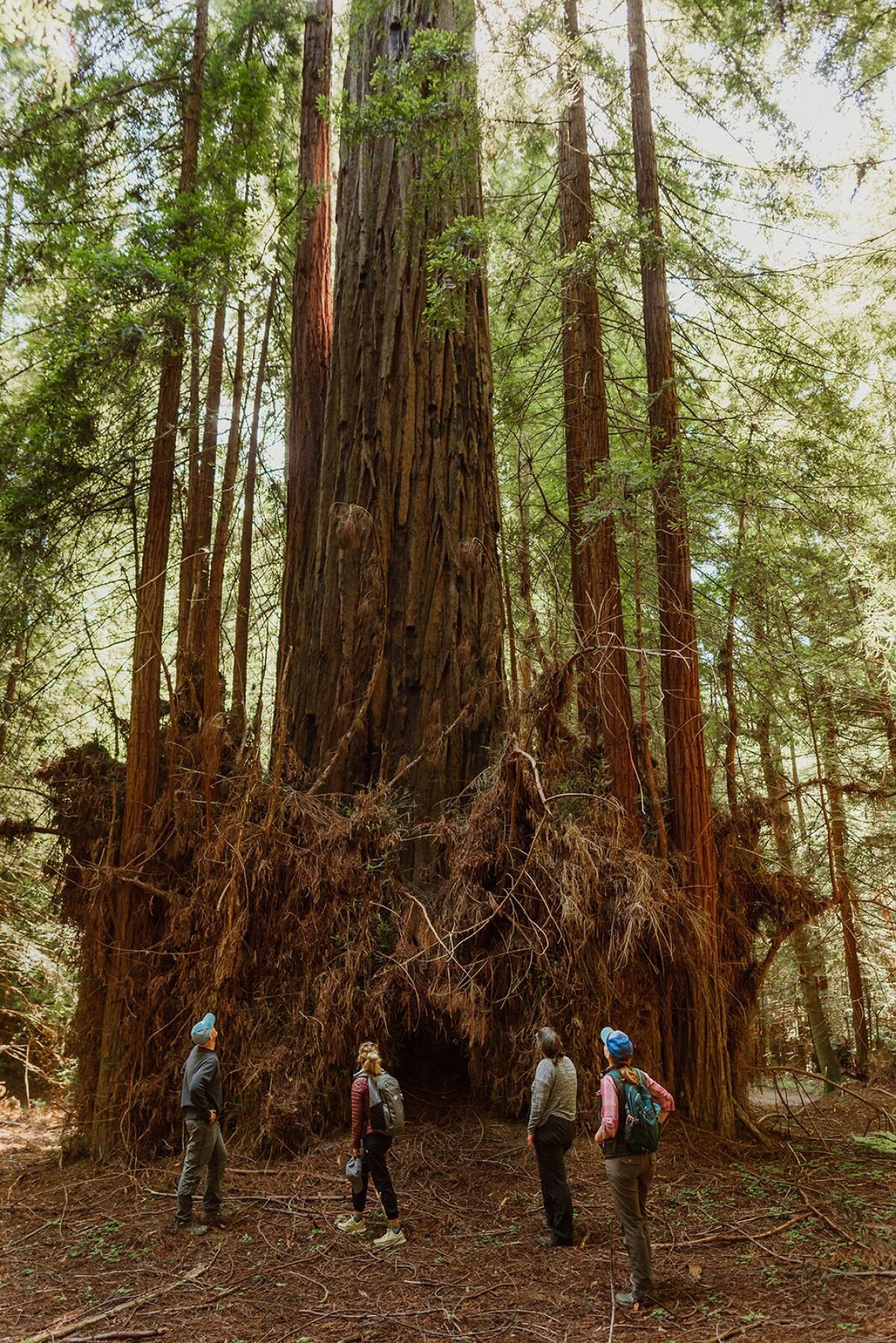
- Share via
In Sonoma County, near a community once called Stumptown because of the sprawling graveyard of cleaved trees left in the wake of California’s early logging boom, one ancient redwood has repeatedly escaped the ax.
And now, after years of uncertainty, the behemoth known as the Clar Tree may be able to live out the rest of its lengthy life without fear of being felled.
The tree persevered, even as an estimated 95% of California’s original redwood forest was chopped or burned in the centuries following European colonization. Named after a man who lived in the area in the late 19th century, the Clar Tree today stands resolute at 278 feet. It’s one of the tallest trees in the county even after last winter’s storms sheared off 30 feet.
The giant coast redwood, thought to be about 2,000 years old, is the last old-growth redwood remaining on a 394-acre property above the Russian River in Guerneville.
After the location of a grove of redwoods was made public, a flood of visitors caused significant damage. A new boardwalk aims to protect the trees.
On Tuesday, Save the Redwoods League announced a plan to raise $6.5 million to buy the property from RMB Revocable Family Trust — which owns the acreage and planned to log a portion of it this year. The league says the landowner has given them a Sept. 30 deadline to complete the purchase.
It’s a “short timeline and a significant lift,” but there’s no shortage of hope, said Sam Hodder, president and chief executive of the nonprofit conservation group. Since 1918, the league has secured protection for more than 216,000 acres of redwood forest.
“With 394 acres, we’re not going to save the world. But the redwoods are such an iconic species, they’re such a charismatic species, and if we can work to set this young redwood forest on our trajectory … then we can set a model for how we collectively steward our forests in a time of changing climate,” Hodder said.
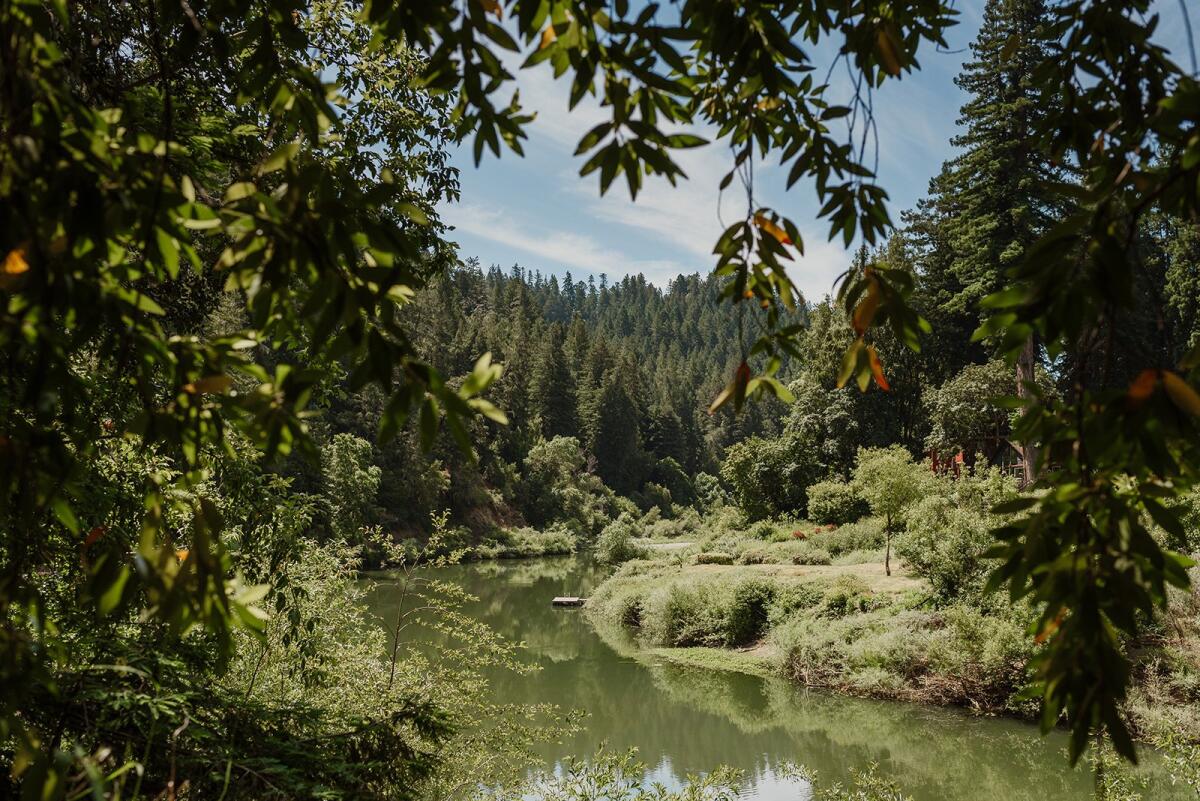
According to the league, if the deal closes, the land will be transferred to Sonoma County for long-term preservation and restoration with the support of the county’s Agricultural Preservation and Open Space District.
The county could also work to make the area around the Clar Tree more accessible for visitors, as well as create a landing along the river to serve as a shady stopover for those traveling by kayak or canoe among the younger redwood groves. The proposed land deal would include one mile of Russian River frontage near Guerneville.
As the forest of coast redwoods and Douglas firs is housed in the ancestral lands of the Southern Pomo people, Hodder said, the league has met with representatives from the Federated Indians of Graton Rancheria to ensure their cultural interests are protected.
News of the potential sale comes as a relief to local community members who have been fighting for years to stop logging near the Russian River, Sonoma County Supervisor Lynda Hopkins said.
How redwoods influence the look and vibe of Wayfarers Chapel on the Palos Verdes Peninsula.
Late last fall, the California Department of Forestry and Fire Protection approved a contentious 224-acre logging plan submitted by Redwood Empire Sawmill to cut down about one-third of the trees on the property. Although the timber company acknowledged the Clar Tree’s unique legacy, surrounding it with a 75-foot “no harvest” radius, many opponents asserted the buffer was not enough to protect the tree’s expansive root system.
In the two years it took for the harvest plan to get approved, it drew hundreds of public comments in opposition. Objectors raised concerns with the destruction of wildlife habitat, as well as the potential for heightened risks of landslides and wildfires from the removal of more fire-resistant trees.
Joshua trees are already struggling to reproduce in a warming climate. Replacing those lost in the York fire may be all but impossible, experts fear.
After the plan was approved, the Guerneville Forest Coalition filed a legal complaint against Cal Fire and Redwood Empire Sawmill, alleging the plan would cause irreparable harm to the Russian River ecosystem. The coalition also alleged that the public outcry had been largely disregarded, as if “thrown down a black hole,” said one of its members, Colin Baptie.
Logging in the area has yet to proceed and the lawsuit is ongoing. Baptie said members of the coalition will meet with their attorney to decide what to do next.
But with the news of the possible purchase, Baptie said the coalition is “over the moon.”
The survey counted over 36 million dead trees, which is a dramatic increase, but there still may be more that were not counted.
The property has come to represent hope for a state already racked by the impacts of a changing climate and the repercussions of human incursion into once-wild areas.
Ancient redwood forests are known to capture more carbon dioxide per acre than any other forest in the world. Just one acre can store up to 890 metric tons of carbon — the equivalent of pulling about 700 cars off the road for a year, according to research from Save the Redwoods League and Cal Poly Humboldt.
Younger forests have proved an impressive ally too. Recent research suggests that with 150 years of growth, regenerating redwood forests can store 30% as much carbon as their ancestors.
Above the Russian River, where the Clar Tree stands sentry over younger trees and stems sprouting from ancient tree stumps, the intergenerational forest provides a glimpse of what the future may one day hold.
“There’s something very mystical of a forest growing out of the skeleton of the forest that once stood, that speaks to the resilience of nature and the will to live and survive and grow back,” Hodder said. “It plants a seed of hope of how, together, we can protect and heal the young redwood forest and help it grow to be the old growth of the future.”
More to Read
Sign up for Essential California
The most important California stories and recommendations in your inbox every morning.
You may occasionally receive promotional content from the Los Angeles Times.

